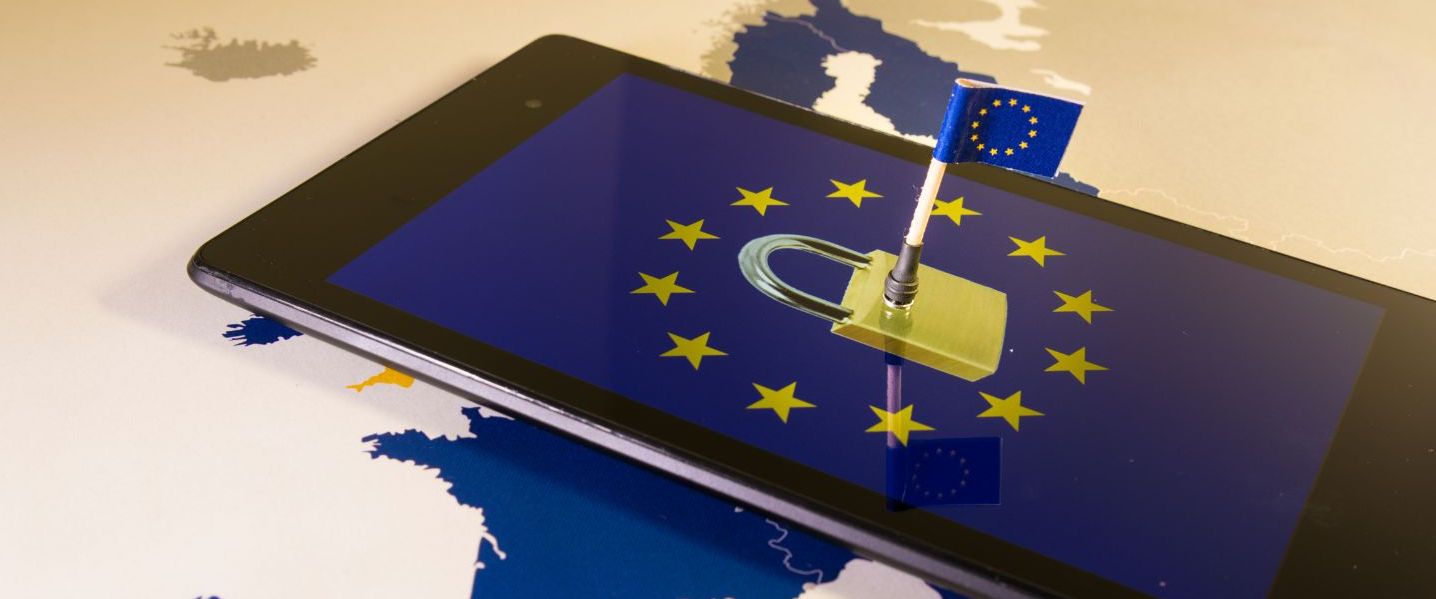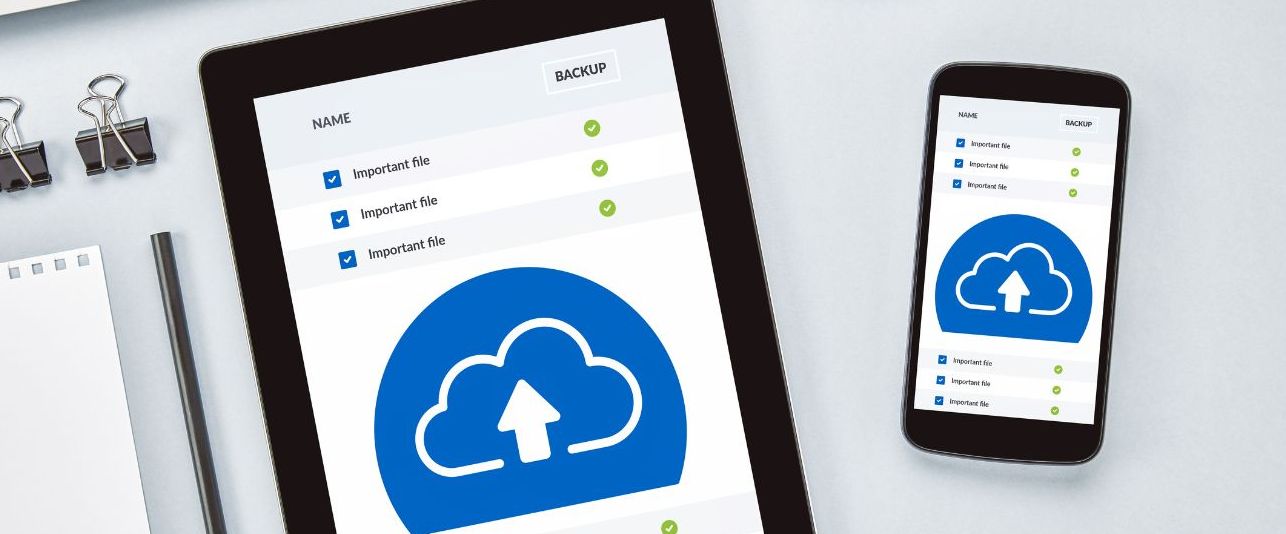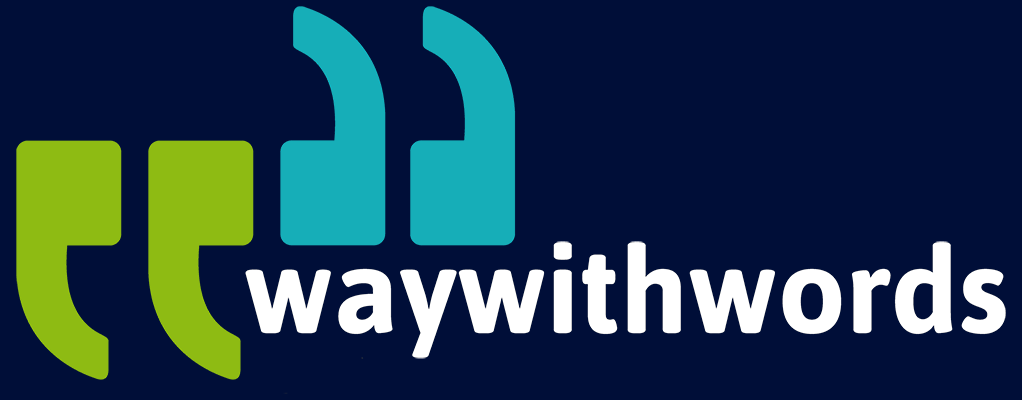How Do Transcription Services Ensure Compliance with GDPR?
Why GDPR Transcription Compliance Matters in Transcription
Transcription services play a central role in converting spoken communication into written records—whether for legal cases, medical consultations, market research, board meetings, or academic interviews. In the process, providers often handle large volumes of personal and sensitive information. This includes names, medical details, bank account numbers, company strategies, and internal communications. Such data falls squarely under the protection of the General Data Protection Regulation (GDPR), a strict EU law designed to uphold privacy and data protection rights.
Introduced in 2018, GDPR doesn’t only apply to companies inside the European Union—it also extends to any entity processing the data of EU residents, regardless of where that organisation is based. That means transcription services operating globally must still comply if their work involves EU individuals or institutions.
Why is this important? Because the consequences of non-compliance are severe. A single data breach or instance of unlawful processing can trigger investigations, legal actions, and fines up to €20 million or 4% of a company’s global revenue. But even aside from fines, failing to comply with GDPR erodes client trust, damages brand reputation, and undermines long-term relationships with institutions that depend on professional confidentiality.
Transcription providers must embed GDPR principles into every part of their service—from how audio files are uploaded and stored, to how final transcripts are produced and deleted. These principles include transparency, lawfulness, data minimisation, security, and accountability.
Here are a few common questions raised by clients and data professionals:
- How do transcription providers prevent unauthorised access to personal data?
- What makes a transcription service GDPR-compliant in practical, enforceable terms?
- Are automated transcription tools more risky under GDPR than human-based services?
This short guide explores ten key areas of GDPR transcription compliance. Whether you’re a data protection officer, legal counsel, HR lead, or IT manager, it offers a practical checklist to ensure that your speech-to-text processing meets the legal, technical, and ethical standards of GDPR.
GDPR and Data Guide
1. Understanding the GDPR’s Impact on Transcription
GDPR reshaped how organisations collect, store, and process personal data. For transcription services, the implications are wide-reaching. Audio and video content may contain highly sensitive personal information, and turning that content into text doesn’t reduce the risk—it may even heighten it, especially if the text is easily searchable and shareable.
Under GDPR, transcription service providers are typically considered “processors.” They handle data on behalf of a “controller”—the client—who determines the purpose and means of processing. This distinction matters because it defines roles, responsibilities, and liabilities.
Key obligations for transcription processors include:
- Processing data only under documented instruction from the controller.
- Ensuring appropriate technical and organisational security measures.
- Assisting the controller in fulfilling data subject rights.
- Not engaging other subprocessors without prior approval.
- Deleting or returning all personal data after service delivery.
In practice, GDPR affects every phase of transcription:
- Before processing: Providers must establish lawful processing grounds, sign Data Processing Agreements (DPAs), and clarify retention timelines.
- During processing: They must safeguard against breaches, enforce encryption, and limit access only to necessary personnel.
- After processing: Providers should delete or return files and maintain records of processing activities.
Key Points:
- GDPR affects all transcription involving EU personal data—even if the provider is outside the EU.
- Transcription providers act as data processors and must follow the controller’s instructions.
- Clients must select transcription partners with verifiable GDPR transcription compliance measures in place.
2. How Transcription Services Handle Personal Data
Transcription involves working directly with personal and often confidential data. This could include identifiable speech from job applicants, patient consultations, board meetings, customer service calls, or police interviews. Providers must treat such data with care, ensuring every handling stage complies with GDPR.
Firstly, transcription services must assess the nature of the data. Is it general personal data (names, phone numbers) or special category data (medical records, political opinions, religious beliefs)? Special category data carries higher legal thresholds for lawful processing.
Secondly, providers should minimise data exposure. Only authorised staff should be able to access files, and only for as long as necessary to complete the job. File access should be logged, monitored, and restricted using secure credentials.
Thirdly, once the job is complete, transcription services must have clear policies for file deletion. Clients should confirm whether data is auto-deleted after a certain number of days or if manual deletion is required.
Many transcription providers now use end-to-end encryption and secure client portals for uploading and downloading files. These portals may include expiration dates for downloads, watermarking, and two-factor authentication.
Key Points:
- All stages of handling—receiving, processing, delivering, and deleting—must be secured and controlled.
- Special category data (e.g., health or legal info) demands stricter safeguards.
- Providers must document handling processes and respond to data subject access requests if needed.
3. Data Anonymisation in GDPR-Compliant Transcription
An effective way to reduce GDPR risk is to anonymise personal data—removing or altering identifiers so individuals cannot be identified. Once data is truly anonymised, GDPR no longer applies. However, true anonymisation is difficult to achieve, especially in transcripts where context can reveal identity even without names.
A more common approach is pseudonymisation—replacing identifiers like names with unique codes or placeholders (e.g., “Speaker A” or “Participant 001”). While this doesn’t exempt the data from GDPR, it does offer enhanced protection and reduces impact in case of a breach.
Transcription providers often apply anonymisation techniques during or after transcription:
- Removing names, locations, and organisations
- Masking voice metadata (if voice recordings are retained)
- Using pseudonyms or initials
- Redacting sections as instructed by the client
Clients should specify anonymisation requirements upfront. In research contexts, ethics boards often mandate anonymised transcripts for publishing.
Key Points:
- True anonymisation removes data from GDPR scope—but is difficult to guarantee.
- Pseudonymisation improves safety and limits risk exposure.
- Clients should request redaction or pseudonymisation for sensitive use cases.

4. Encryption and Data Security Protocols
Encryption is essential to GDPR compliance, particularly for services processing data over the internet. Transcription files—both audio and text—must be encrypted during upload, storage, and delivery.
There are two main types of encryption to consider:
- Encryption in transit: This protects data while it’s being uploaded or downloaded. SSL/TLS protocols (i.e., HTTPS) are the standard for securing file transfers via browser or API.
- Encryption at rest: This secures files while they are stored on servers. Providers should use AES-256 or equivalent encryption standards.
Transcription companies should also employ firewalls, intrusion detection systems, and secure access protocols like VPNs and multifactor authentication. All file transfers and edits should be logged.
Some providers go further by using isolated work environments (e.g., virtual desktops or secure sandboxes) where transcribers can work without the ability to download, copy, or print data. This is especially common in legal or medical transcription.
Key Points:
- GDPR requires encryption where feasible to protect personal data.
- Secure upload/download tools and strong server security are essential.
- Clients should ask for documented encryption protocols from their providers.
5. The Role of Data Processing Agreements (DPAs)
A Data Processing Agreement (DPA) is one of the most critical documents in ensuring GDPR compliance between a data controller (typically the client) and a data processor (the transcription provider). Under Article 28 of the GDPR, a DPA is not optional—it is mandatory whenever personal data is outsourced for processing. This includes transcription, where spoken content is turned into written records.
A DPA sets out the legal framework within which the transcription provider is allowed to process personal data. It establishes clear boundaries, responsibilities, and obligations. Without this agreement in place, even well-intentioned data processing could be deemed illegal.
The DPA should specify:
- The nature and purpose of processing (e.g. transcribing customer interviews)
- The categories of personal data involved (e.g. names, email addresses, medical history)
- The types of data subjects (e.g. customers, patients, employees)
- The duration of processing and terms for data deletion or return
- Security measures implemented by the processor
- The controller’s right to audit and inspect data handling practices
- Procedures in the event of a breach or request from a data subject
Transcription providers should be willing to provide a pre-drafted DPA, or to review and sign the client’s own. A refusal or vague response is a major red flag.
Key Points:
- A DPA is legally required under GDPR for any transcription service handling personal data.
- It must define roles, processing scope, security, and termination procedures.
- Clients must ensure they have a signed and valid DPA before transferring any files.
6. Transparent Consent and Legal Basis for Transcription
Under GDPR, all data processing must be backed by a valid legal basis. For transcription, the legal basis must be determined by the data controller before any audio is recorded or transcribed.
There are six legal grounds under GDPR, but the three most relevant for transcription are:
- Consent: The data subject has explicitly agreed to have their speech recorded and transcribed. Consent must be freely given, specific, informed, and unambiguous. It must also be recorded and revocable. This is especially relevant in research, interviews, or focus groups.
- Contractual necessity: Processing is required to fulfil a contract involving the data subject—such as employment onboarding or medical diagnosis.
- Legitimate interest: The controller has a legitimate reason to process data, such as internal meeting transcription for operational efficiency. However, this cannot override the individual’s rights and freedoms.
Transcription providers are not typically responsible for obtaining consent, but they must ensure they understand the basis on which data is being processed. Their role is to ensure they process the data solely for the intended purpose, without repurposing, storing, or analysing it beyond the agreed scope.
Where consent is the chosen basis, clients should ensure:
- A signed consent form or documented agreement is on file
- Participants understand how their data will be used
- Withdrawal rights are respected and workflows are in place for erasure
Key Points:
- Every transcription task must be justified by a lawful basis.
- Consent must be informed, recorded, and retrievable.
- Providers should not use or retain data beyond the client’s instructions.
7. Managing Cross-Border Data Transfers
With many transcription providers relying on global infrastructure—cloud services, remote teams, and international tools—cross-border data transfers are common. GDPR, however, places strict restrictions on sending personal data outside the European Economic Area (EEA).
Personal data can only be transferred outside the EEA if the receiving country ensures an adequate level of protection. Currently, a few countries like the UK, Canada, and Japan are recognised as having adequacy. But many popular service locations—such as the US, India, and South Africa—do not.
In such cases, alternative safeguards must be put in place. The most common are:
- Standard Contractual Clauses (SCCs): Pre-approved legal clauses that bind the recipient to GDPR standards.
- Binding Corporate Rules (BCRs): Internal policies for multinational companies, approved by regulators.
- Data Privacy Framework (for US transfers): An arrangement under review that allows limited transfer based on specific commitments.
Transcription providers must be able to explain where data is stored and how it is protected when moved across borders. Clients must perform Transfer Impact Assessments (TIAs) when necessary and document how risks are mitigated.
Key Points:
- GDPR restricts international data transfers to non-adequate countries.
- Transfers must use SCCs, BCRs, or other approved mechanisms.
- Clients must know and document where transcription data is hosted and processed.

8. Automated vs Human-Based Transcription Under GDPR
Automated Speech Recognition (ASR) tools have become increasingly common due to their speed and affordability. However, they can present significant GDPR risks, especially when transparency about data use is lacking.
Many ASR providers use recorded data to train or improve their AI models. If users are not informed of this or have not consented, this use may violate GDPR—especially where special category data is involved.
Moreover, ASR providers often operate out of jurisdictions with less stringent privacy laws. Without SCCs or additional safeguards, simply using these services could expose clients to compliance risks.
On the other hand, human transcription—especially by GDPR-trained professionals—allows for tighter access control and oversight. Staff can be vetted, bound by non-disclosure agreements, and held accountable. Files can be restricted to secure, access-controlled environments with audit trails.
The most robust approach may be hybrid: use ASR to draft transcripts quickly, then have a human editor review, anonymise, and finalise. But in all cases, the client must ensure the tools used are compliant and transparent.
Key Points:
- ASR tools can pose GDPR risks if data use is opaque or servers are overseas.
- Human transcription allows greater control and better auditability.
- Always ask how your data is used, stored, and deleted—whether by machine or person.
9. Risk Mitigation and Breach Response Planning
Under Article 33 of the GDPR, organisations must notify the relevant supervisory authority within 72 hours of becoming aware of a personal data breach—unless it is unlikely to result in risk to data subjects.
This means transcription providers must have robust breach response plans. A delay, cover-up, or lack of documentation can be far more damaging than the breach itself.
Risk scenarios in transcription might include:
- Unauthorised file access by an external actor
- Lost or stolen devices containing unencrypted files
- Accidental sharing of transcripts with the wrong client
An effective breach response plan includes:
- Immediate incident detection and containment measures
- Notification workflows to inform the client (controller) without delay
- Forensic analysis and root cause documentation
- Remediation strategies to prevent recurrence
- Training staff to identify and escalate potential breaches
Clients should assess their provider’s preparedness during onboarding. Ask for policy documents, audit logs, and examples of past breach handling (redacted if needed).
Key Points:
- GDPR requires breach notifications within 72 hours.
- Providers must have detection, reporting, and remediation protocols.
- Clients should confirm response capabilities and review them regularly.
10. Accountability and Ongoing Compliance Audits
Under GDPR’s accountability principle, it’s not enough for organisations to simply follow the rules—they must be able to demonstrate that they are doing so, at all times.
For transcription providers, this means maintaining a paper trail of processing activities, data access, encryption policies, staff training, and incident reports. Controllers (clients) also have an obligation to monitor their processors on an ongoing basis.
Key accountability tools include:
- Article 30 Records of Processing: A log of all data processing activities and their legal basis.
- Privacy Policies: Clearly stating how data is collected, used, shared, and deleted.
- Training Logs: Evidence that staff are trained on GDPR, confidentiality, and security.
- Compliance Audits: Scheduled internal or third-party reviews of GDPR controls.
- Data Protection Impact Assessments (DPIAs): Risk assessments for high-risk processing activities.
Clients should build compliance checks into their vendor management process. This might include annual DPA reviews, compliance questionnaires, or requiring updated certifications (e.g. ISO/IEC 27001).
Key Points:
- GDPR requires organisations to demonstrate compliance through documentation.
- Transcription providers must maintain logs, policies, and training records.
- Clients should schedule regular compliance reviews with their providers.
Key Tips for Ensuring GDPR Transcription Compliance
- Get a signed DPA before any data is shared. This sets the legal foundation for secure processing.
- Ask where your data is stored and processed. Avoid providers who won’t disclose this.
- Check encryption practices. Your files should be encrypted both in transit and at rest.
- Request details about human access. Only trained, authorised staff should handle sensitive data.
- Review compliance annually. Make GDPR audits part of your vendor management routine.
The Case for Responsible Transcription
GDPR transcription compliance isn’t simply a legal obligation—it’s a way to build trust and protect individuals whose personal information appears in transcripts. Whether you’re recording staff interviews, academic research, or court proceedings, your choice of transcription provider matters more than ever.
This short guide has explored ten critical areas to focus on, from data minimisation and encryption to international transfers and breach readiness. It’s clear that not all transcription services are built alike. Some offer detailed compliance documentation, robust contracts, and human oversight. Others may fall short—placing your organisation at risk.
The GDPR’s message is simple: accountability, transparency, and control are not optional. They are required steps in protecting personal data and maintaining lawful business operations.
If you’re a client, ask more than “are you GDPR compliant?” Instead, request the DPA. Ask where data is hosted. Verify who sees it and how it’s protected. Make sure your partner has more than just words—they have systems, logs, and responses.
And if you’re a transcription provider, view GDPR as an opportunity—not a burden. Clients want reassurance. Give it to them with clarity, proof, and professionalism.
Further GDPR Transcription Compliance Resources
General Data Protection Regulation (Wikipedia): Explains the GDPR and its significance in protecting personal data within the EU and beyond.
Way With Words: Transcription Services: Way With Words employs advanced technology and highly skilled transcribers to overcome common challenges in transcription, ensuring that clients receive accurate and reliable transcripts regardless of the complexity of their audio files.
